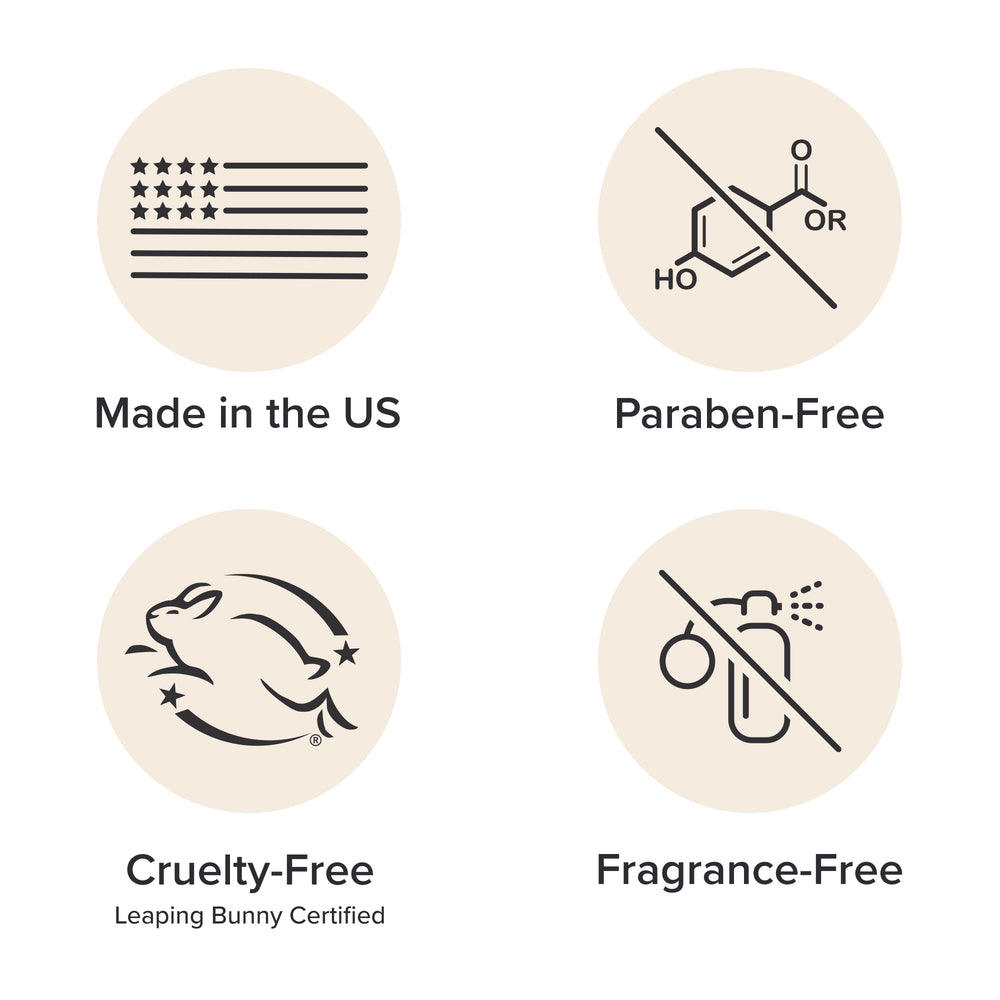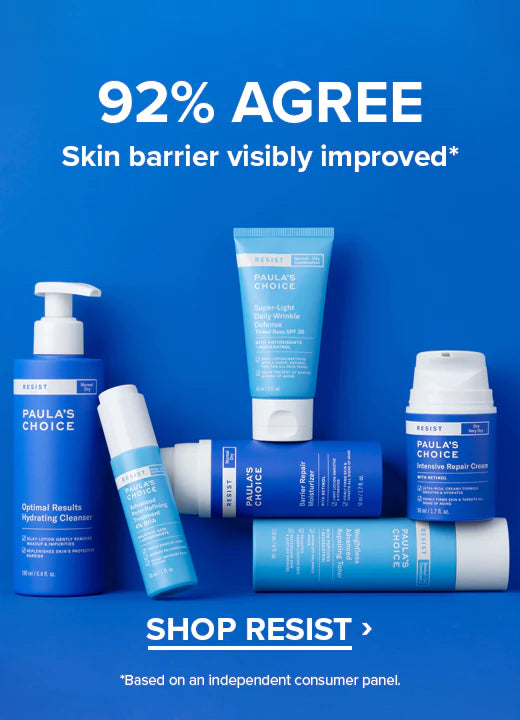Written by: Desiree Stordahl
Medically Reviewed by: Debra Jaliman MD Board-Certified Dermatologist
Is your skin dry in some areas and oily in other areas? If so, you have combination skin. Figuring out how to balance these two opposing skin types can seem a tad tricky at first, but when armed with the right info and products, balancing combination skin is actually a lot easier than you might think.
What is combination skin?
Combination skin is recognized as having oily skin in some areas of your face and dry skin in other areas. Typically, the t-zone (forehead, nose, and chin) are more prone to oiliness and the dry areas usually persist around the cheeks, jaw area, and along the hairline.
What causes combination skin?
A variety of factors can contribute to combination skin, but often it comes down to the luck of the draw in terms of what you inherited from your parents. Seasonal climate changes may also factor in and the types of skin care products you’re using can absolutely exacerbate combination skin (1).
An overproduction of skin’s oil (known as sebum) leads to an oily t-zone. When not addressed with regular cleansing and exfoliation, this sebum can linger in pores, mix with dead skin cells and contribute to breakouts.
One of the major ways you might unknowingly make combination skin more of an issue is by using products that contain harsh or irritating ingredients that will inevitably dry out some areas of your face while stimulating oil production in other parts (especially around the nose) that were already oily.
Examples of irritating formulas include:
- Toners formulated with skin-sensitizing denatured or SD alcohol, menthol, and witch hazel
- Overly abrasive scrubs (if you can feel it scratching at skin that’s a red flag)
- Bar soaps and cleansers that leave skin uncomfortably tight and dry
- Any skin care product with a strong, wafting scent, whether the source of the fragrance is natural or synthetic (2).
Can combination skin change to normal skin?
If using the wrong products is causing your skin to be dry in some areas and oily in others, eliminating them from your routine and making the appropriate substitutions to your routine will help get your combination skin back on the "normal” track. By “normal” we mean the dry areas will feel more hydrated and smoother and the oily areas will look less greasy. You may also notice that enlarged pores return to their normal size.
How to treat combination skin
Addressing both excess oil and dryness can seem like a daunting task, so we’ve put together our top suggestions and routine steps below for healthy combination skin.
Wash your face with a cleanser every day
Start with a gentle but effective water-soluble cleanser. It can be a creamy foaming face wash or gel cleanser. The goal is for it to effectively remove impurities, debris, and makeup without leaving skin feeling tight, dry, or greasy. If you need a bit of extra cleansing, you can consider using an emollient cleansing balm first to gently break down makeup and sunscreen, followed by a water-soluble cleanser to whisk all debris away.
Use a clay mask
Clay, as well as charcoal, have absorbent properties which can soak up and trap excess oil on skin’s surface and just inside the pore. This allows it to be easily washed off, which helps reduce the shiny look of oily areas on the face, especially the forehead. When formulated with soothing and hydrating ingredients, clay masks can help address excess sebum while still hydrating skin. For combination skin types, apply an oil-absorbing clay face mask after cleansing to affected areas.
Apply toner
Apply a hydrating, soothing non-irritating toner filled with a healthy amount of skin-replenishing ingredients and antioxidants. A well-formulated toner for combination skin really can help nourish dry skin and minimize oiliness at the same time—and it won’t make the dry areas drier or the oily areas oilier. Don’t skip this step, it's incredibly beneficial for this skin type.
Try exfoliating
Use a gentle, non-abrasive, leave-on BHA exfoliant. This is an optimal choice for gently but effectively exfoliating combination skin. A BHA exfoliant helps skin shed dead cells normally without abrasion (meaning no scrubs or stiff cleansing brushes), unclogs pores, lessens oily skin, and at the same time gently smooths rough, dry, flaky skin and revives a healthy glow. You can experiment with different textures to see what feels best for your combination skin, but as a jumping off point, most find a gel exfoliant or weightless liquid exfoliant is ideal.
Use moisturizer
Moisturize and protect skin from sun damage. No skin type is exempt from the need of a broad-spectrum sunscreen rated SPF 30 or greater and applied 365 days a year (3). This is the one daytime step that reduces the early signs of aging now and into the future. A feather-light formula is the ideal sunscreen for combination skin all over the face (and don’t forget to apply to the neck!). At Paula’s Choice, we formulate daytime sunscreens with moisturizing agents to create multitasking products. If your dry areas need more hydration then a multitasking formula can provide, apply another moisturizer or antioxidant serum first to those areas. Then follow with the sunscreen over that.
Use a nighttime moisturizer with a gel or serum-like texture that contains antioxidants, skin-replenishing ingredients, and skin-restoring ingredients. These are imperative to help calm skin, lessen excess oil on skin’s surface, and improve dry areas, including around the eyes. For the dry areas, add another layer of an emollient serum or facial oil to relieve the dryness and give those areas extra nourishing enriched hydration.
Watch your makeup ingredients
Combination skin can really throw your makeup routine for a loop. The formulas that work on your t-zone might not work on the borders of your face, and vice versa. In order to give your makeup the best chance of staying all day long and not becoming both oily and flakey, prime dry areas with a hydrating moisturizer made for makeup application and oily areas with a mattifying primer.
When it comes to foundation, you can go the route of applying natural finishes, meaning those whose finish won’t look matte or glowy. Remember to always set your t-zone with an oil-absorbing powder or powder foundation for even results.
Which products work for combination skin?
Focus on oil-absorbing or matte-finish formulas for the oily areas of your combination skin; go with more emollient products over the dry areas.
For the oily areas, use the lighter weight formulas—products with a gel, thin lotion, or liquid texture. These types of textures layer well, so you can use them over the entire face. You would then only need to add an emollient facial oil, serum, or moisturizer over the dry areas, including around the eyes.
How to deal with extreme combination skin
Those struggling with extreme combination skin experience an exceptionally oily T-zone, while the sides of the face are typically very dry and may also be flaky. For extreme combination skin, be extra careful to use oil-absorbing products just where needed, dabbing them on precisely. Apply emollient-rich products to the very dry areas, blending away from the oily areas.
As for cleansers, a hydrating lotion face wash works well to clean skin without leaving skin tight or dry. For your daytime moisturizer with sunscreen, go for the lightest possible formula but apply a rich moisturizer or facial oil to the dry areas first.
Is combination skin acne-prone?
Combination skin can also be prone to acne. You may have more breakouts in the T-zone or all over the face or not at all—this varies from person to person. If you’re experiencing dehydrated, oily, acne-prone skin all at that same time we have a separate guide to get to you through it. Spoiler alert: salicylic acid, aka BHA, plays a major role in the fight against acne (4).
How do I know my skin type?
If you aren’t 100% sure what skin type you have, use a gentle cleanser to wash your face and then wait about 15 to 30 minutes to see how your skin behaves. If your skin starts experiencing dryness and feels tight, with no signs of oiliness, you have dry skin. If your face takes on a shiny appearance with zero signs of dryness, you have oily skin. If your T-zone starts looking oily but your cheeks and jaw area start feeling slightly to moderately dry, you likely have combination skin. No dryness or oiliness? You’ve got “normal” or more accurately phrased “neutral” skin (5). Learn more about the nuances of different skin types.
For more information, see our article How to Put Together a Skin Care Routine, which walks you step by step through the process that applies to all skin types.
Learn more about combination skin.
References for this information:
- Skin Research and Technology, 2005, pages 189-195
- Journal of Dermatology & Cosmetology, April 2020, pages 42-44
- Cold Spring Harbor Perspectives in Medicine, January 2015, pages 1-14
- Journal of the Medical Sciences, 2001, pages 95-103
- American Academy of Dermatology, Accessed February 2022, ePublication





